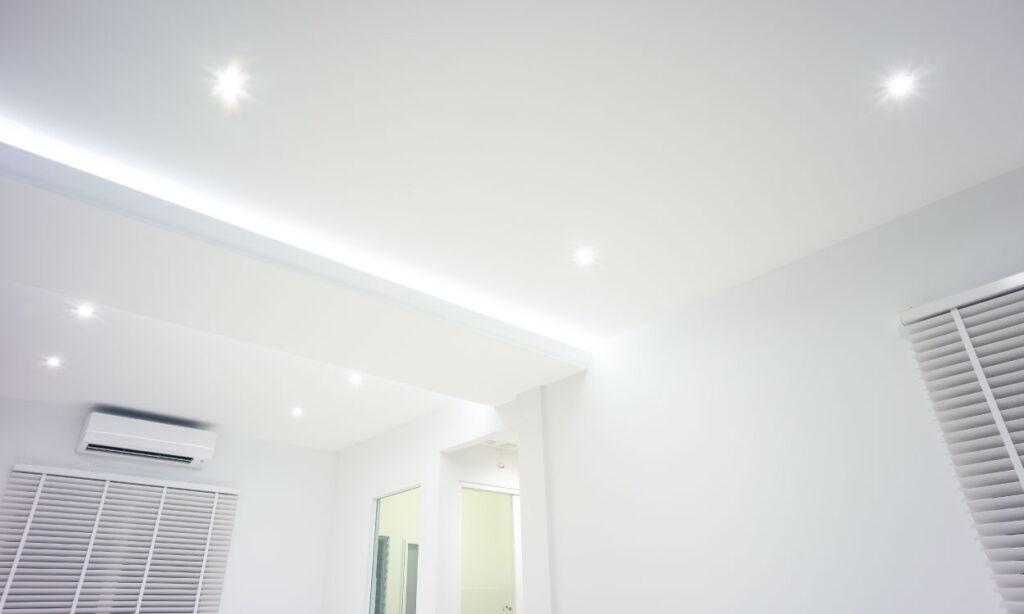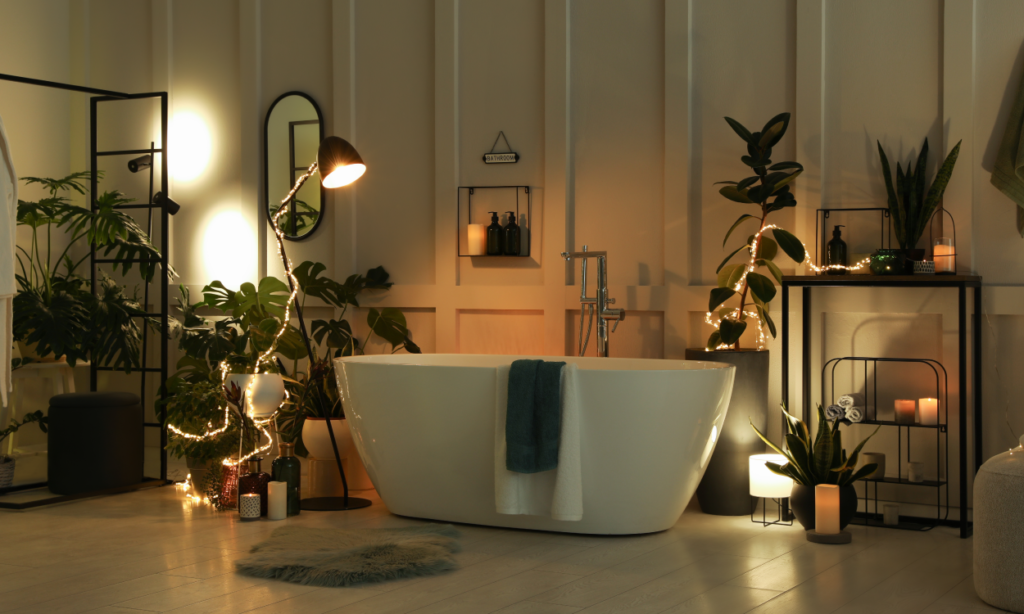Imagine a place where you can escape the daily grind, break a sweat, and prioritise your health – all without leaving your home. Creating a personal fitness sanctuary is not just a dream, it’s a practical and achievable goal for anyone dedicated to a healthier lifestyle.
Whether you’re a fitness enthusiast, a home gym owner, or simply health-conscious, this guide will walk you through the steps to build your own fitness sanctuary. From choosing the right garage flooring to selecting affordable equipment and solving storage dilemmas, we’ve got you covered.

Why Build a Home Gym?
Convenience and Flexibility
One of the biggest advantages of having a home gym is the convenience it offers, no more commuting to the gym or waiting for equipment to become available. With a home gym, you can work out whenever it suits you best, whether that’s early in the morning or late at night. The flexibility ensures that even the busiest schedules can accommodate regular exercise.
Cost-Effective in the Long Run
While the initial investment might seem substantial, a home gym can save you money in the long run. Monthly gym memberships add up over time, and by building your own gym, you can eliminate that recurring cost. Plus, you’ll save on travel expenses and the hidden costs associated with commercial gyms, like locker fees and overpriced supplements.
Personalised Environment
Your home gym reflects your personal style and workout preferences. Whether you prefer a minimalist space with just the essentials or a fully equipped setup, the choice is yours. This personalised environment can enhance your motivation and make workouts more enjoyable.
Choosing the Right Space
Assess Your Available Space
The first step in creating a home gym is to assess the available space. Do you have a spare room, garage, or outbuilding that can be transformed? Each option has its pros and cons. For instance, a garage gym offers ample space and ventilation, while a spare room can be more convenient if your garage space is used to store your odds and ends.
Consider Temperature
Climate control is crucial for maintaining a comfortable workout environment. If you’re using a garage, consider investing in heating for winter and fans or air conditioning for summer. A comfortable temperature ensures that you can work out effectively year-round.
Noise and Privacy
Think about noise levels and privacy. If your home gym is close to living areas, invest in soundproofing to avoid disturbing other household members. Privacy is also essential for focused workouts, so choose a space where you can exercise without interruptions.
Garage Flooring
Importance of Proper Flooring
When it comes to setting up a gym in your garage, the right flooring is essential. Proper flooring not only protects your equipment and the underlying floor but also provides the necessary support and cushioning for your workouts. It can reduce the risk of injury and increase the longevity of both your equipment and the floor itself.
Types of Garage Gym Flooring
There are several types of flooring to consider for your garage gym:
- Rubber Mats: Durable and shock-absorbent, rubber mats are ideal for weightlifting areas. They provide excellent traction and are easy to clean.
- Foam Tiles: These are softer and provide more cushioning, making them suitable for activities like yoga or stretching. However, they may not withstand heavy weights as well as rubber mats.
- Vinyl Flooring: Vinyl is a versatile option that combines durability with aesthetic appeal. It’s easy to clean and maintain, making it a great choice for multi-purpose home gyms.
Installation Tips
Installing gym flooring is a straightforward process that you can do yourself. Start by measuring the area and cutting the mats or tiles to fit. Clean the existing floor thoroughly before laying down the new flooring. Use adhesive if necessary to keep the flooring in place, especially in heavy footfall areas.
Garage Flooring
Importance of Proper Flooring
When it comes to setting up a gym in your garage, the right flooring is essential. Proper flooring not only protects your equipment and the underlying floor but also provides the necessary support and cushioning for your workouts. It can reduce the risk of injury and increase the longevity of both your equipment and the floor itself.
Types of Garage Gym Flooring
There are several types of flooring to consider for your garage gym:
- Rubber Mats: Durable and shock-absorbent, rubber mats are ideal for weightlifting areas. They provide excellent traction and are easy to clean.
- Foam Tiles: These are softer and provide more cushioning, making them suitable for activities like yoga or stretching. However, they may not withstand heavy weights as well as rubber mats.
- Vinyl Flooring: Vinyl is a versatile option that combines durability with aesthetic appeal. It’s easy to clean and maintain, making it a great choice for multi-purpose home gyms.
Installation Tips
Installing gym flooring is a straightforward process that you can do yourself. Start by measuring the area and cutting the mats or tiles to fit. Clean the existing floor thoroughly before laying down the new flooring. Use adhesive if necessary to keep the flooring in place, especially in heavy footfall areas.
Essential Home Gym Equipment
Basic Equipment for Every Home Gym
Every home gym should have a few essential pieces of equipment to ensure a comprehensive workout. Here are some basics to consider:
- Adjustable Dumbbells: Versatile and space-saving, adjustable dumbbells allow you to perform a variety of exercises.
- Resistance Bands: Ideal for strength training and rehabilitation exercises, resistance bands are affordable and take up very little space.
- Yoga Mat: A good-quality yoga mat is a must for stretching, yoga, and bodyweight exercises.
Specialised Equipment
Depending on your fitness goals, you might want to invest in specialised equipment:
- Cardio Equipment: Cardiovascular exercise is so important for our overall health. A treadmill or bike, for example, provides an excellent cardio workout at home.
- Barbell and Weight Plates: For serious strength training, a barbell and weight plates are a must. Ensure you have a sturdy rack to store them safely.
- Kettlebells: These are great for functional training and can add variety to your workouts.
Budget-Friendly Options
Creating a home gym doesn’t have to break the bank. Look for budget-friendly options like second-hand equipment or multi-functional items. Resistance bands, for example, are inexpensive but incredibly versatile. Online marketplaces and car boot sales can also be great places to find affordable, gently used equipment.
Maximising Your Storage
Efficient storage is key to maintaining an organised home gym. Here are some smart storage solutions to consider:
- Wall-Mounted Racks: Save floor space by storing weights and accessories on wall-mounted racks.
- Storage Boxes: Use sturdy storage boxes to keep smaller items like resistance bands and yoga mats organised. Label the boxes for easy access.
- Shelving Units: Invest in durable shelving units to store larger items like dumbbells, kettlebells, and medicine balls.
Multi-Functional Furniture
Consider multi-functional furniture that doubles as storage. For example, a bench with built-in storage can hold your workout gear while providing a place to sit or perform exercises. Look for pieces that fit your style and needs.
Decluttering Regularly
Keep your home gym clutter-free by regularly decluttering and reorganising. Donate or sell equipment you no longer use and keep only what you need and love. A tidy space enhances focus and makes your workouts more enjoyable.
Building a Home Gym on a Budget
Planning Your Budget
Start by planning your budget and prioritising essential items. Allocate funds for high-priority equipment and look for budget-friendly alternatives for less essential items. Remember that you can always add more equipment over time as your budget allows.
DIY Solutions
Get creative with DIY solutions to save money. For instance, you can build your own weight rack using affordable materials or create a lifting platform with plywood and rubber mats. DIY projects can be fun and rewarding, and they allow you to customise your gym to your exact specifications.
Sales and Discounts
Take advantage of sales, discounts, and second-hand options. Many fitness equipment retailers offer seasonal sales, and online marketplaces often have gently used items at a fraction of the cost. Patience and persistence can help you find great deals.
Getting Started With Your Fitness Space
Creating your own fitness sanctuary at home is a rewarding endeavour that offers countless benefits. From the convenience of working out on your schedule to the cost savings over time, a home gym is an investment in your health and well-being. By choosing the right space, selecting essential equipment, and maximising storage, you can build a functional and inspiring gym that meets your fitness goals. And remember, you don’t have to do it all at once—start with the basics and expand as you go.



